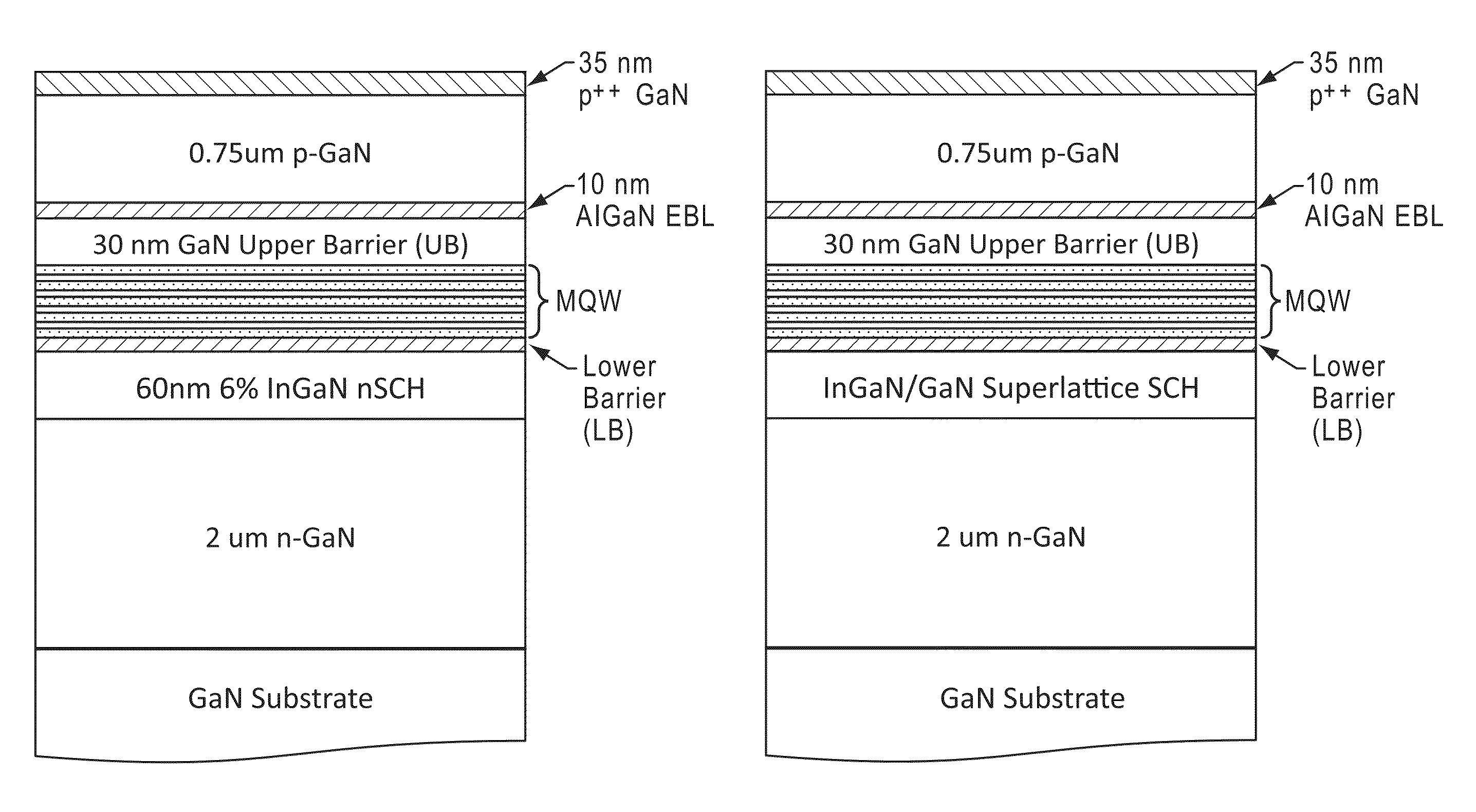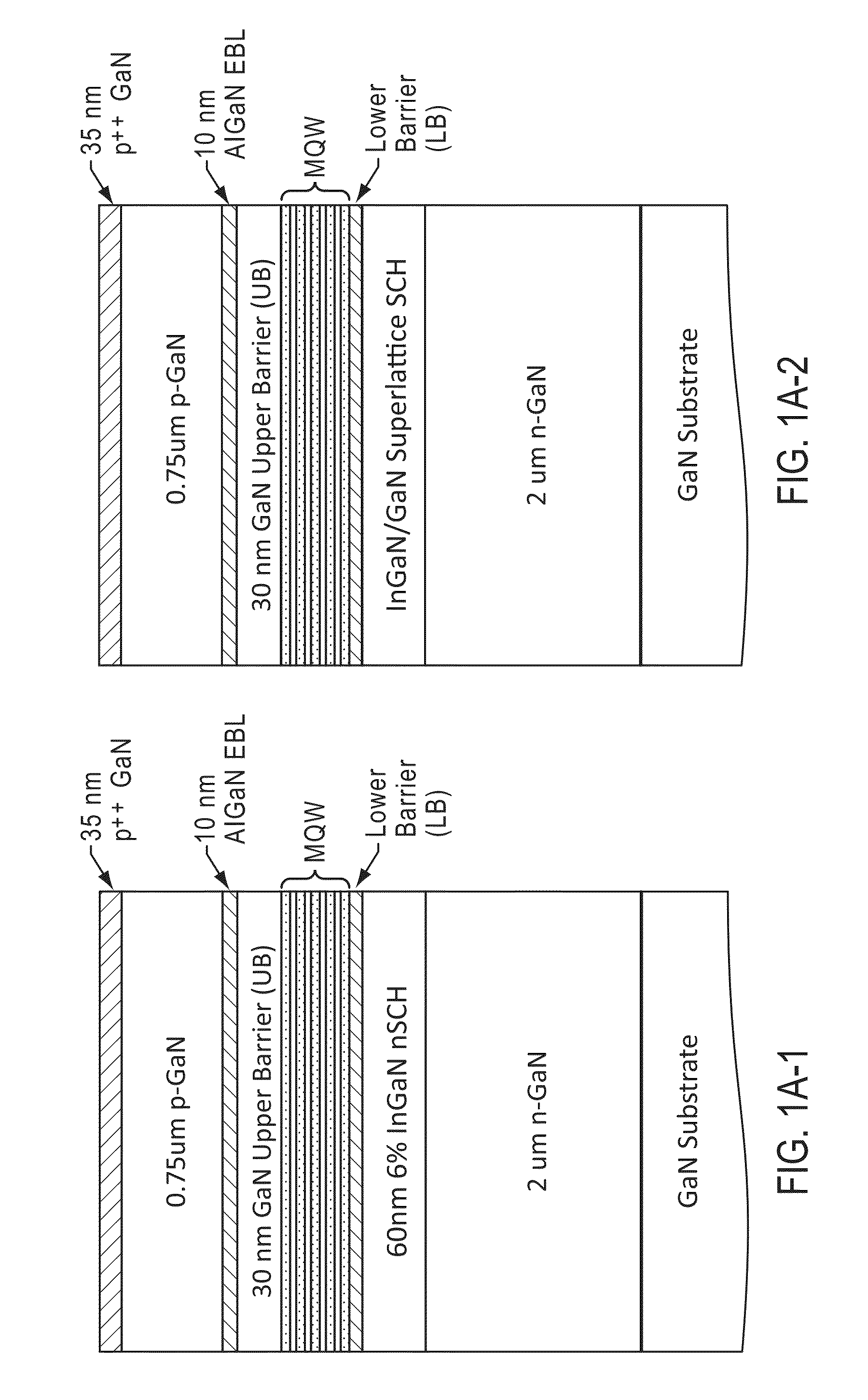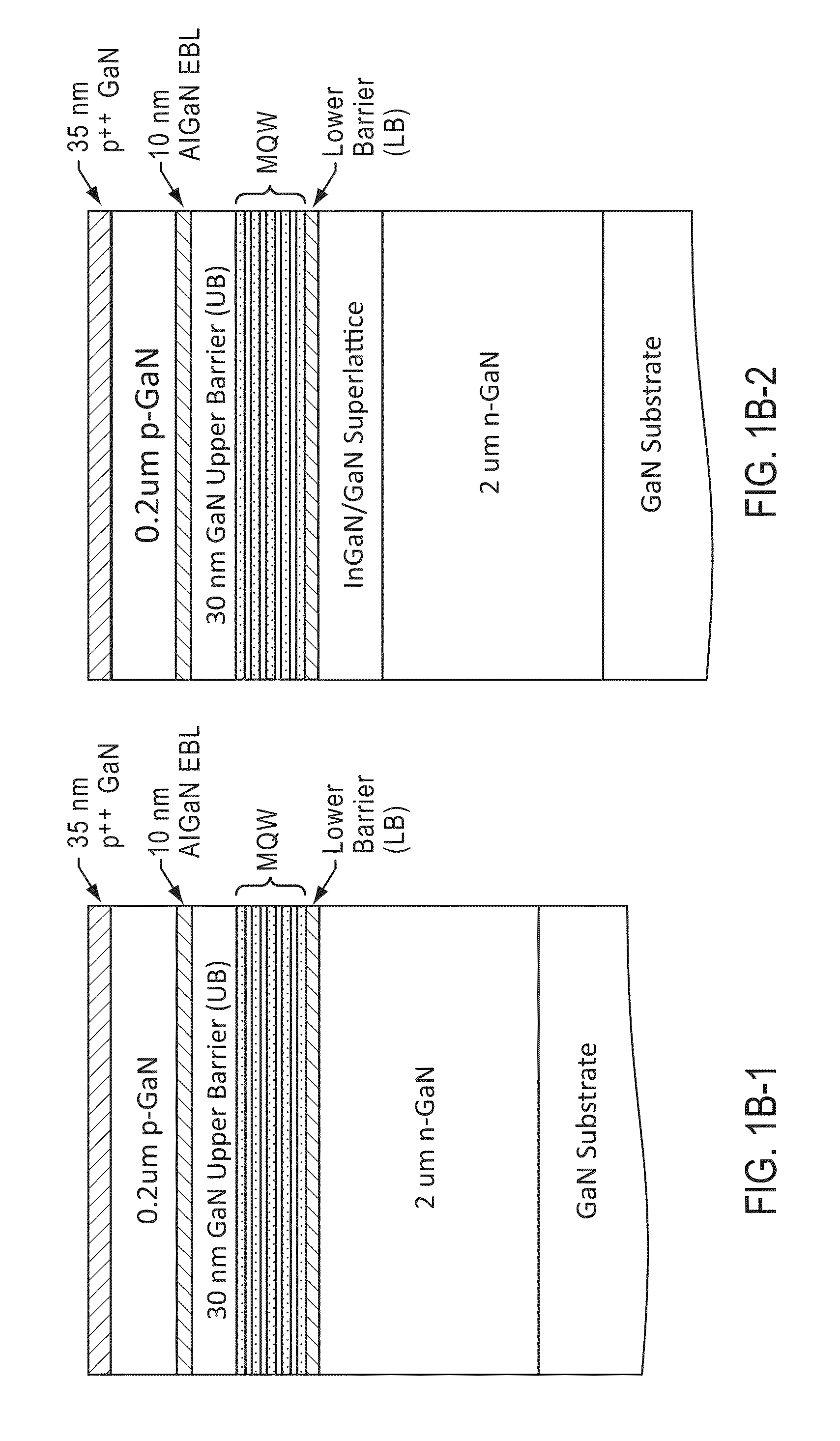Laser devices using a semipolar plane
a laser device and semi-polar plane technology, applied in the field of optical devices, can solve the problems of 0.1% efficiency of wall plugs, 80% power consumption, routine failure, etc., and achieve the effect of reducing the degradation of quantum wells or light emitting regions, low resistance p-cladding, and good device performan
- Summary
- Abstract
- Description
- Claims
- Application Information
AI Technical Summary
Benefits of technology
Problems solved by technology
Method used
Image
Examples
Embodiment Construction
[0053]FIGS. 1A-1, 1A-2, 1B-1, and 1B-2 are diagrams of optical devices including growth regions according to an embodiment of the present invention. As shown, the laser diode is an epitaxial structure configured on a gallium and nitrogen containing substrate within a family of planes, e.g., (30-3-2), (20-2-1), (30-3-1), (30-32), (20-21), (30-31) or any orientation within + / −10 degrees toward c-plane and / or a-plane from these orientations. In a specific embodiment referring to FIG. 1A-1, the gallium nitride substrate includes an n-type gallium and nitride epitaxial region, an overlying InGaN nSCH region, a lower barrier region, a plurality of quantum well regions, an upper barrier region, an electron blocking region, a p-type gallium and nitrogen containing region, and an overlying p++ GaN contact region. Referring now to FIG. 1A-2, the gallium nitride substrate includes an n-type gallium and nitride epitaxial region, an overlying InGaN / GaN superlattice SCH region, a lower barrier re...
PUM
 Login to View More
Login to View More Abstract
Description
Claims
Application Information
 Login to View More
Login to View More - R&D
- Intellectual Property
- Life Sciences
- Materials
- Tech Scout
- Unparalleled Data Quality
- Higher Quality Content
- 60% Fewer Hallucinations
Browse by: Latest US Patents, China's latest patents, Technical Efficacy Thesaurus, Application Domain, Technology Topic, Popular Technical Reports.
© 2025 PatSnap. All rights reserved.Legal|Privacy policy|Modern Slavery Act Transparency Statement|Sitemap|About US| Contact US: help@patsnap.com



